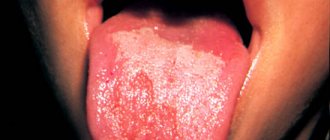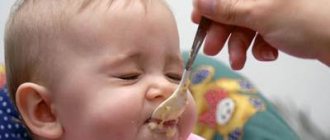Who has it?
It is no coincidence that this mark is called the “Mongolian spot.” Most often it occurs in infants of the Mongols, Buryats, Yakuts, Koreans, Chinese, Japanese, Khakassians and other representatives of the Mongoloid race. The appearance of such a congenital spot has been noted among North American Indians, Ainu and Eskimos. It is extremely rare that the “Genghis Khan spot” can be seen in infants of other races, and, as a rule, its appearance means that there were Mongoloids in the family. In this case, the spot occurs in both newborn boys and girls.
Causes of the Mongolian spot
As for scientists, they believe that the reason for the appearance of the Mongolian spot in infants lies in deviations of embryonic development caused by a special gene present in the Mongoloid race. In fair-skinned children, melanin is released only when exposed to ultraviolet radiation, but in a child of the Mongoloid race, melanin is constantly produced, and for this reason Mongolian spots may occur. As you know, the skin consists of a superficial layer - the epidermis and a deeper layer - the dermis. The cells that produce melanin during normal pigmentation are located in the epidermis. When the embryo develops in the womb, the process of migration of pigment cells from the ectoderm to the epidermis remains incomplete. Because of this, pigmentation remains in the deep layers of the skin, which leads to the formation of Mongolian spots.
Legends associated with the “Mongol spot”
The Mongols are very proud of this innate feature. It was they who came up with the name “Genghis Khan’s spot” (otherwise it is called “khoh tolbo” - blue spot), believing that all the descendants of the great conqueror were marked this way. The location of the spot, according to the Mongols, clearly indicates that its bearer will spend most of his life sitting in the saddle. Sometimes from representatives of Mongoloid peoples you can hear the following legend about the appearance of the spot: the baby did not want to be born, and some deity spanked him. The Yakuts are accompanied by a slap from the goddess Ayysyt, Turkic-speaking babies are sent to our world by Tengri. And Muslim peoples call these spots “the slap of Allah.”
However, not everyone has a positive attitude towards the stain. For example, in Latin America, if a mother who considers herself of European origin gives birth to a baby with a “medal on her butt,” this circumstance is carefully hidden.
Manifestations of the Mongolian spot
Pigmented formations are most often localized in the sacrum, back, lumbar area, buttocks, and on the upper and lower extremities. Occasionally, the location of the Mongolian spot may change, this is called nevus migration. Mongolian spots are sometimes localized in atypical areas: on the legs, forearms and other parts of the body.
The size of the spots can vary greatly: from very small formations (the size of a small coin) to large areas of pigmentation reaching the size of a plate. In some infants, the congenital spot may completely cover the entire area of the back or buttocks.
Mostly the color of a Mongolian spot is bluish or gray, but sometimes it can be bluish-brown if the melanin is, for one reason or another, located in the shallow layers of the skin. A characteristic feature of the Mongolian spot is that its color is evenly distributed over the entire surface of the nevus. As the child gets older, the color of the Mongolian spot becomes less saturated, and in most cases the pigmentation completely disappears by the age of five. According to statistics, Mongolian spots disappear in 19 out of 20 children. There are rare cases where blue Mongolian spots remain in a child until adolescence, and sometimes until the end of life. The Mongolian spot is a melanoma-neutral nevus, and in dermatology there has not been a single case of a Mongolian spot developing into melanoma. Blue Mongolian spots are often confused with bruises and hematomas, but they have nothing to do with these injuries and are skin pigmentations that are harmless to humans. Such stains can only cause aesthetic inconvenience.
What is it and features
The Mongolian spot in children is a congenital pathology, and is an accumulation of melanin in the middle layers of the skin. This type of birthmarks acquired this name not because of Mongolia itself, but because of the nature of its manifestation in children of the Mongoloid races. More than 80% of newborns in China, Korea, Vietnam, Japan, Indonesia, India, and Chukotka are born with blue spots on their bodies. Slightly less often, such manifestations on the body are found in children of the Negroid race and among the population of the Earth, distinguished by a dark or dark skin tone. Only more than 1% of white-skinned children are born with this pathology in European countries.
This phenomenon cannot be called a disease; the stain does not threaten the health and life of the child, and is not accompanied by any symptoms, unpleasant sensations or discomfort. Nevus is only a cosmetic problem that goes away on its own by 2-4 years of age.
The German anthropologist Egon von Eickstedt was interested in Mongoloid spots on the body and noted that they are hereditary. Some nationalities consider this manifestation to be an imprint of higher powers and attach divine significance to the marks, while Brazilians and residents of northwestern South America carefully hide the blue marks and consider them something of a shame or an extreme nuisance. Eskimos, Mongols, Buryats and Polynesians regard the blue sign on the body of a newborn as a favor towards man from Nature itself and Heaven. The larger the spot, the more blessed the child will be. This phenomenon on the skin began to be called sacred. Less religious peoples nicknamed the gray-blue pigmentation “coccygeal spot” due to its frequent location in the sacral spine.
We recommend reading
- What can cause nipples to darken?
- How to whiten dark spots under arms
- All kinds of methods to get rid of brown spots on the face
The famous anthropologist and physician Erwin Beltz was inclined to think that education among representatives of the Caucasian race can only happen when there is racial admixture in the family.
What it is?
The Mongoloid spot in newborns received its name for the reason that most of the children who are born with such a mark belong to the Mongoloid race. It includes quite a few nationalities, in particular, the Chinese and Koreans, as well as the Vietnamese and Japanese, Indonesians and Eskimos, etc. At the same time, the appearance of a Mongolian spot in children of the European race is considered quite rare.
The mark on the skin is essentially a type of congenital pigmented nevi. Its typical location is the lumbosacral region; in other words, a Mongoloid spot is observed on the lower back or bottom of children.
The meaning of the mark on the tailbone
Among representatives of the Mongoloid race, a blue-gray spot on a child’s buttocks is not an exception, but a rather typical sign. This symptom is recorded in almost 90% of infants. Therefore, many folk legends and beliefs are associated with it. In particular:
- Representatives of the Mongolian race sincerely believe that the appearance of such a mark indicates that the child has the genes of Genghis Khan himself. Moreover, the brighter the spot, the stronger the connection with such a famous warrior of the past (both blood and spiritual).
- There is a belief that the presence of a spot is associated with future sitting in the saddle.
- Buryats believe that the stain is directly related to future well-being; accordingly, the larger it is, the better.
- The Yakuts believe that the spot is a mark from the slap of the good goddess Aiyysyt, who closely watches the birth.
- There is also a legend that a spot on a baby’s bottom is a sacred sign.
Of course, all these beliefs are nothing more than beautiful fairy tales. But they help parents not to worry about Mongolian spots, but to be proud of them.
Why is there a Mongolian spot?
Scientists have long established the cause of the appearance of Mongolian spots on the body of a baby. It turns out that the mark on the body is an accumulation of pigment-forming skin cells.
It is known that human skin has a rather complex structure. In particular, the top layer of this organ is the epidermis, and below it is the dermis. The cells responsible for the production of the pigment (coloring substance) melanin are located directly in the epidermis. Scientists call them melanocytes. In Caucasians, the synthesis of melanocytes is carried out mostly under the influence of ultraviolet radiation - this process leads to a natural change in skin color, namely the appearance of a tan. If we talk about other races, they synthesize melanin all the time, which is why their skin has a certain color. It is worth noting that the color of the skin is determined not by the number of melanocytes, but by their functional activity.
When the fetus is still developing in the mother's womb, melanocytes migrate into the epidermis from the outer germ layer (ectoderm). Scientists are confident that the appearance of the Mongolian spot is associated precisely with this process - the mark appears if the migration was not completely completed, and some of the pigment-forming cells remained in the dermis. Melanin, which they produce, leads to a change in skin color to gray-bluish tones.
Diagnostics
A newborn with unnatural pigments on the skin should be seen by a dermatologist. The doctor is obliged to make a differential diagnosis of the defect. With the help of such a dermatological examination, a specialist will distinguish pathology from dangerous diseases and get rid of assumptions about a possible tumor. Differentiation of changes from other nevi consists of:
- dermatoscopy;
- siacopies;
- biopsies.
Diagnosis of the Mongolian spot is mandatory! A doctor must definitely confirm the suspected diagnosis, because the spot can be melanoma-dangerous and become a problem and even a threat to the baby’s health. Then the child is registered with an oncologist and a dermatologist. To be sure of the proposed diagnosis, a doctor (both a pediatrician and a dermatologist) may suggest a histological examination and siascopy.
How does the Mongolian spot appear?
This pigmented neoplasm makes itself felt in the first days of a baby’s birth. Immediately after birth, the spot does not have such a rich color color. It differs from the general flesh color of the skin by a light blue tint. After 2-3 days, when the child’s skin is exposed to indirect rays of sunlight, along with which a certain dose of ultraviolet radiation hits the epithelium, the congenital nevus begins to darken and becomes gray or dark bluish. Sometimes such a rich color of the skin of a small child causes panic and bewilderment in parents. Despite the very non-aesthetic external picture of the skin area in the lumbar region, there are no reasonable reasons for alarm.
Diagnosis of the Mongolian spot
Despite the fact that Mongolian spots on the skin do not pose any threat to the life and health of the child, if they are detected, consultation with a dermatologist is necessary. The doctor determines the origin of the spot and makes an accurate diagnosis, because Mongolian spots may resemble melanoma-dangerous nevi: blue nevi, nevi of Ota and pigmented pilar nevi, which require special treatment. A specialist may prescribe a dermatoscopy, siascopy, and even a biopsy for a child with a Mongolian spot to detect melanin in the deep layers of the dermis. If, after diagnosis, doctors determine the absence of malignant nevi, then no treatment is required. Mongolian spots of any shape and size go away on their own, so there is no need to register with a dermatologist.
Pigment spots on the skin do not itch, are not injured and do not cause any inconvenience to the owner, other than cosmetic ones. Mongolian spot is not a disease and therefore does not require prevention. The prognosis for this type of pigmented nevus is favorable.










